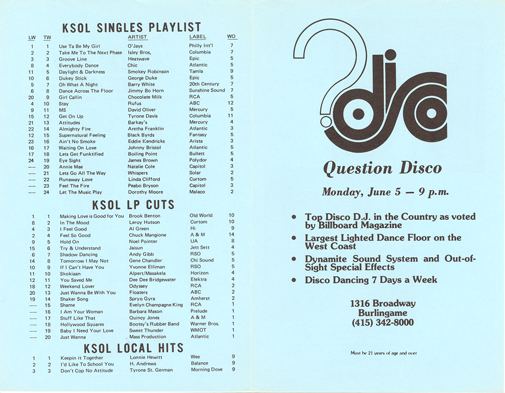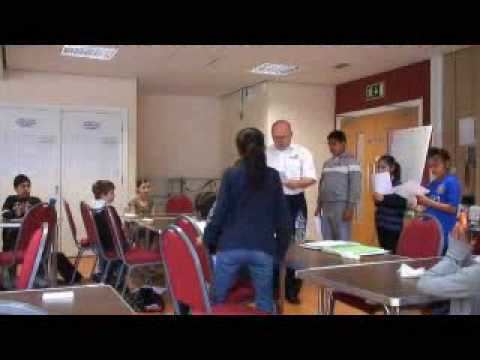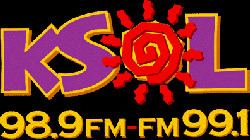Class B Frequency 98.9 MHz | HAAT 409 meters Facility ID 70032 City of license San Francisco Owner Univision | |
 | ||
First air date February 1, 1948 (as KJBS-FM) Area San Francisco, Oakland, San Jose Branding Radio Estereo Sol, 98.9 y 99.1 Slogan La Estacion Del Cara De Perro Piolin Por La Mañana | ||
Ksol sly stone 1967
KSOL 98.9 FM ("98.9 y 99.1 Que Buena") is a Spanish language radio station in San Francisco, California. KSQL (99.1 FM) simulcasts the station in Santa Cruz. KSOL and KSQL program a format consisting of regional Mexican music and talk shows. Both stations are owned by Univision. Its studios are in the Financial District of San Francisco, and the KSOL transmitter is on Mount Sutro.
Contents
- Ksol sly stone 1967
- Ksol san francisco
- History
- The Quake
- More format and ownership changes
- KSOL call letters arrive at 989 FM
- Callsign history for 989
- References

There are two booster stations for this station: KSOL-FM2 in Sausalito since 1992, and KSOL-FM3 in Pleasanton since 1997.

The 98.9 frequency is the third station in the San Francisco market to use the callsign KSOL. The first was the AM rhythm and blues station at 1450 AM (the current KEST). Sly Stone was influential in guiding KSOL into soul music and started calling the station K-SOUL. The second was a popular soul music station (sans the K-SOUL moniker), at 107.7 FM (now known as KSAN). The current KSOL is unrelated to the previous two stations.

Ksol san francisco
History

The station at 98.9 was established in February 1948 as the FM simulcast component of KJBS 1100 (now KFAX) by Julius Brunton & Sons, transmitting from the (still existing) tower atop Clay Jones Apartments at 1250 Jones Street. As KJBS it had been a full-service station with news, weather, and sports programming, and served as a relay, interrupting programming overnight, to alert police and fire personnel to incidents, prior to the departments' own radio dispatch systems. The FM station was financially unsuccessful, and in 1953 it was sold to CBS. KCBS-FM had been operating with substantially lower power on 103.7 when it made the move to acquire this station.

Under CBS it rebroadcast KCBS until 1968 when it began to use the syndicated CBS automated programming, "The Young Sound". Later, it produced its own locally originated rock programming.

In September 1978, owner CBS wanted a still more powerful FM assignment, so they arranged a three-station swap that enabled them to be heard on a much stronger signal. KCBS-FM, their format and intellectual property moved to KEAR's 97.3 FM frequency, KMPX moved their big band and swing music format and call letters from 106.9 FM to 98.9 FM, and KEAR moved their Christian-based format from 97.3 FM to 106.9 FM.
The Quake

In 1982, KMPX was sold to a New Jersey investor group, administered by general manager Les Elias and station manager Bob Heymann, and flipped to a mainstream rock format as KQAK, "The Quake FM99", on August 23 of that year, Hosting the morning show was the popular Alex Bennett, who had left KMEL in a disagreement over station direction a few months earlier.

KQAK was a personality-oriented album-oriented rock station for its first eight months of operation, and was partially influenced by the programming of WLUP in Chicago, a station that Elias and Heymann had previously managed.

A talented air staff was assembled for the station. In addition to Bennett was Joe Regelski as co-host, continuing their collaboration from KMEL, and Richard "Big Rick" Stuart, future KROQ jock Jed "Jed the Fish" Gould The 3rd, Mike Koste, Richard Gossett, Belle Nolan, Rob Francis, Oscar "Oz" Medina, Paul "Lobster" Wells, comedian Tim Bedore and others worked at The Quake at one time or another.
A month after KQAK's debut, another Bay Area station, KFOG changed its format from beautiful music to rock. This change left the Bay Area with six very similar-sounding stations (KMEL, KRQR, KQAK and KFOG, plus San Jose stations KOME and KSJO). Today, KFOG is the only one of those stations still carrying a rock format.
In April 1983, Elias and Heymann decided to reposition the station (under the programming guidance of Rick Carroll from KROQ-FM) as the "Rock of the '80s," emphasizing new wave, punk, reggae, 2 Tone ska, first generation Gothic rock, tracks from the 1960s and 1970s by musicians whose work influenced later punk and new wave performers, and the occasional novelty track. The modern rock format of The Quake has become much more memorable than their AOR incarnation, and its later demise was an important catalyst for a shift to a similar but more polished presentation at "Live 105" (KITS) in 1986.
Popular programs on The Quake, in addition to shows like, "The Alex Bennett's Morning Program", "The Quake's Early Tremors", "Midnight Dread" and a syndicated program called "The Rock Over London".
The KQAK broadcast studios were located at 1311 Sutter Street in San Francisco.
The final song broadcast before The Quake went off the air on June 18, 1985 was "Around The Dial" from The Kinks; this featured a re-edited version of the 'radio tuning' intro for the song which made reference to the demise of the station.
Later, another station, progressive talk radio KQKE, went on to use the same "Quake" nickname. Paul "Lobster" Wells has worked for KQKE, which was otherwise not related to KQAK. Today, the station, AM 960, is KNEW.
The KQAK call letters currently reside on a station in Bend, Oregon.
More format and ownership changes
On June 22, 1985, following four days of stunting with all-Brian Eno music, the station became KKCY ("The City"), with an eclectic rock format, partly inspired by another midwestern station, KTCZ in Minneapolis, Minnesota. All of The Quake's on-air staffers left the station, except for Bennett and his morning sidekick, Joe Regelski. Bennett left a short time later when station management insisted he play more music on his show, and later brought his morning show (sans Regelski) to KITS.
The 98.9 frequency then underwent years of turmoil. In late 1986, the station dropped the eclectic freeform rock in favor of Big Band/Adult Standards (shades of the original KMPX); then, in February 1987, they adopted a CHR format as KHIT. Both of these changes elicited a large outcry from the dedicated following KKCY's format had gathered. A group called "Coalition To Save The City" was formed and the group lobbied KHIT's owners to change the format back.
The station was eventually purchased by Bay Area media mogul James Gabbert, who changed the call letters to KOFY-FM on May 14, 1988, matching the calls of sister TV station KOFY Channel 20 and 1050 AM. Gabbert returned the station to the previous adult album alternative format, which lasted for two years amid much tweaking.
The next owner of KOFY obtained their neighboring station on the dial, KLRS (99.1 FM) in Santa Cruz. The two stations tweaked KOFY's Triple A format and adopted the call letters KDBK (98.9) and KDBQ (99.1) - "Double 99" in July 1990.
The two stations then shifted to a Hot Adult Contemporary format in the Spring of 1993 as Star 99. The stations call letters were also changed to KSRY and KSRI.
KSOL call letters arrive at 98.9 FM
In December 1993, Allen Shaw's Crescent Communications purchased 107.7 KSOL from United Broadcasting, and purchased KSRY and KSRI from Viacom in 1994. Shaw changed 107.7 to KYLD in April 1994, calling it "Wild 107". The KSOL call letters were put on then-co-owned 98.9, with the format switching to urban adult contemporary on April 18, 1994, where Bay Area Hall of Fame (BAHOF) inductee Don Sainte-Johnn served as morning host. The San Jose signal of 99.1 became a San Jose simulcast of "Wild 107" as KYLZ.
KSOL, KYLD and KYLZ were sold by Crescent Communications to Tichner Media and Evergreen Media in August 1996. On August 15th of that year, KSOL then switched to a Regional Mexican music format, and 99.1 became KZOL, again a simulcast.
In April 2002, KSOL swapped call letters with KEMR (105.7 FM) in San Jose, and shifted toward a Spanish-language adult contemporary approach, with 99.1 becoming KZMR. When 105.7 switched formats and call letters to KVVF, the KSOL call letters returned to 98.9, with 99.1 redubbed KZOL.
The two stations have simulcasted since 1990, with 98.9 covering the North Bay, and 99.1 covering the far South Bay.
Callsign history for 98.9
It is believed that 98.9 has had more callsign changes than any other radio or TV station in California history.
